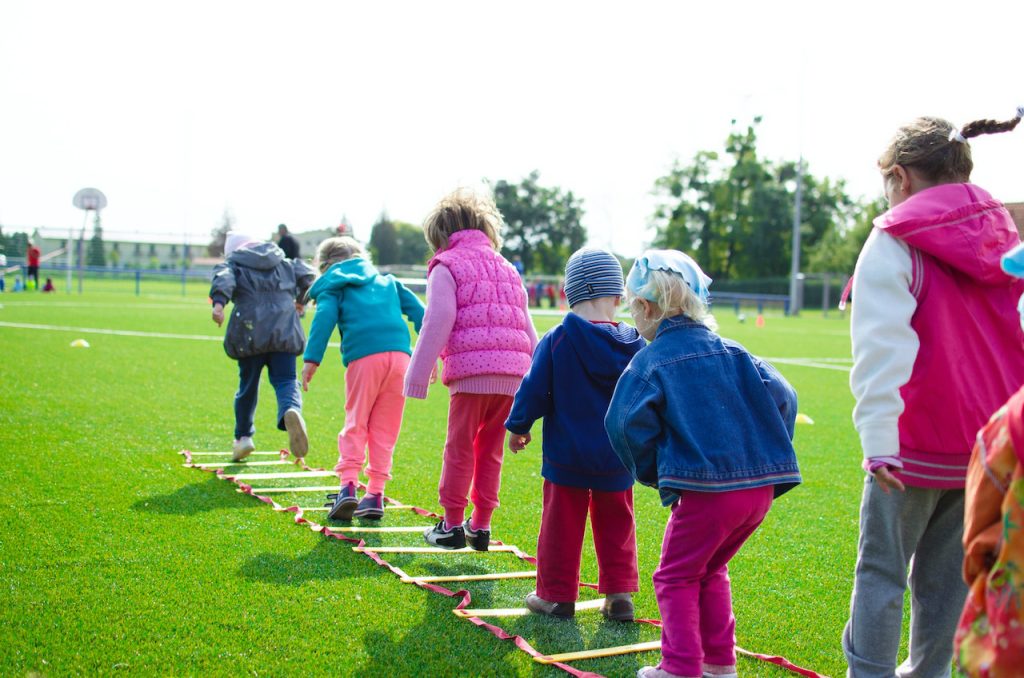 After the fall of communism in Romania, thousands of children were discovered in institutional orphanages across the country. Because of high child to caregiver ratios, these children were neglected, with overall low levels of caregiving and very regimented non-individualized care. Because there was no foster care program at that time in Romania, researchers Charles Zeanah, Charles Nelson, and Nathan Fox set up a new grant-funded foster care intervention program. This program was well supported, with frequent visits by a dedicated team of social workers to foster families. Children were randomly selected to participate in this foster care program providing scientists an unusual opportunity to study what happens to children’s brains when they’re deprived of attention and emotional connection.
After the fall of communism in Romania, thousands of children were discovered in institutional orphanages across the country. Because of high child to caregiver ratios, these children were neglected, with overall low levels of caregiving and very regimented non-individualized care. Because there was no foster care program at that time in Romania, researchers Charles Zeanah, Charles Nelson, and Nathan Fox set up a new grant-funded foster care intervention program. This program was well supported, with frequent visits by a dedicated team of social workers to foster families. Children were randomly selected to participate in this foster care program providing scientists an unusual opportunity to study what happens to children’s brains when they’re deprived of attention and emotional connection.
A new study published on Oct. 7 in Science Advances shows that early deprivation continues to affect brain development well into adolescence.

“We know from years of animal work that experiences early in life shape brain development but until now, this has never been shown conclusively in humans,” says Margaret Sheridan, a clinical psychologist and associate professor of psychology and neuroscience in UNC’s College of Arts and Sciences. Sheridan is the lead author on a new study showing that deprivation in early childhood shapes the development of brain structure through adolescence.
Sheridan, a Faculty Fellow at the Carolina Population Center, and a team of researchers from the Bucharest Early Intervention Project show that children who were randomly placed out of institutional care and into well-supported foster care before the age of 3 had changes in areas of the brain that support higher-order problem solving years later, when the children were 16.
In addition, children placed into high-quality foster care before 3 saw typical brain development from 9 to 16 years, in areas related to emotional reactivity, language, and executive function, but this pattern was altered to children who were deprived of family care.
“Here we show that that the opportunities that a child has in early life to learn and grow will impact not just their behavior but their actual brain development and brain structure for years to come,” says Sheridan. “Children need invested caregivers supporting their development from a very early age.”
The new evidence shows that what doesn’t happen to children is just as important as what does.
The Bucharest Early Intervention Project, launched in 2001 is a landmark study of the impact of institutionalization, a severe form of neglect on child development. It is the only randomized controlled trial of foster care as an alternative to institutional rearing. Between the ages of 6 and 33 months, 68 children were removed from orphanages and placed in high-quality foster care. Families who received a foster child were frequently visited by a social work and given significant financial support, which helped families integrate and provide support.
The children have been tracked throughout their childhoods, and initial evidence of the negative impact of institutionalization on development changed the way Romania approached childcare and family leave.
“This new evidence shows what doesn’t happen to children matters just as much as what does happen for child brain development,” says Sheridan.
Q&A with Margaret Sheridan, University of North Carolina at Chapel Hill (Psychology and Neuroscience), Science Advances team
Q: Why did you decide to do this analysis?
Sheridan: Adversity has been linked with changes in the brain and body in many correlational studies. This has led researchers to hypothesize that early adversity ’embeds’ in the body – changing how the brain and body develop. In particular, researchers suspect that early adversity has this impact because childhood is characterized by enhanced plasticity – as the brain develops it grows to be the most efficient for the environment it will encounter in the future, so early environments appear to preferentially shape brain development. The impact of early environments on brain development have been demonstrated experimentally in rodents, however, until now we lacked experimental evidence that this same process happened in humans.
We wanted to demonstrate that early adversity doesn’t just change how you think or feel later but that changes in your environment which start even before you can remember shape the development of your brain years later.
The early brain plasticity that I mention above is implemented through changes to cortical structure, this is why we were interested in neural structure.
Q: Why use MRI scans at age 9 and then age 16 specifically?
Sheridan: As children enter into adolescence we see a rapid increase in social development with adolescents establishing new long-term social networks and supports as well as a rapid uptick in mental health problems. These social changes are accompanied by changes in neural structure and function. We studied neural structure in very early and later in adolescence, capturing how the brain was shaped by early development during this second period of developmental plasticity.
Q: You found that children in institutional care had significantly decreased thinning compared with those randomly placed in foster care. What does this quantitatively mean? Was there a percentage difference by which this decrease was observed?
Sheridan: It’s very difficult to quantify the size of this effect due to the methodological approach but I think the association between brain differences & behavioral outcomes we care about (IQ, mental health) really speak to the importance of these results.
Q: Why are your results important both for the scientific community and for public health?
Sheridan: These findings clearly demonstrate the causal impact of positive caregiving environments on brain development in humans. The brain is our organ of behavior, emotions, and cognition, if we want healthy adolescents, they need healthy brains. In recent times conversation has focused on how to better support caregivers through early pre-k programs, better family social services, and health care. If these kinds of supports provide resources to families so that they can focus on parenting, those programs will support healthy brain development.
Q: In your study, you write “These findings highlight the critical importance of identifying family-based alternatives to institutionalization for children and the importance of working through policy and practice to reduce the likelihood that children are separated from their families.” This statement seems universal, not merely restricted to happenings Bucharest.
You wrote an op-ed in the New York Times in 2018 discussing harmful outcomes of separating of children at the US-Mexico border. So, would you please speak to the relevance of your findings – not only as they apply to the BEIP, but for how they ought to inform national immigration policymaking and, on a more local-level, foster care system interventions/techniques?
In all cases where we remove children from sensitive care and place them into institutional or neglectful care, we are exposing their brains to environments which will not just shape their next few years but which we have demonstrated will have long term impacts on brain development, even into adolescence. In turn, in this paper we show that changes in brain development are correlated with cognitive and mental health problems for these adolescents. The policy of separating children at the border and placing them into institutional care is an example of a policy which is very likely to impair future brain development for those children and thus impair their future mental health and cognitive capacity.
Foster care intervention as an alternative to institutional care in our study demonstrates efficacy in terms of protecting children’s health and brain development. However, this foster care intervention was attachment based & child centered as well as being very well supported, with frequent visits by a dedicated team of social workers who helped children transition out of institutional care and into new relationships with their foster families. (see: Smyke, A. T., Zeanah, C. H., Jr., Fox, N. A., & Nelson, C. A. III. (2009). A new model of foster care for young children: The Bucharest Early Intervention Project. Child and Adolescent Psychiatric Clinics of North America, 18(3), 721–734).
In the U.S. working to support foster families with similar programs and decreasing the amount of time children in the foster care system are in institutional settings is critical to supporting healthy brain development for America’s youth.
Story courtesy of the Carolina Population Center
